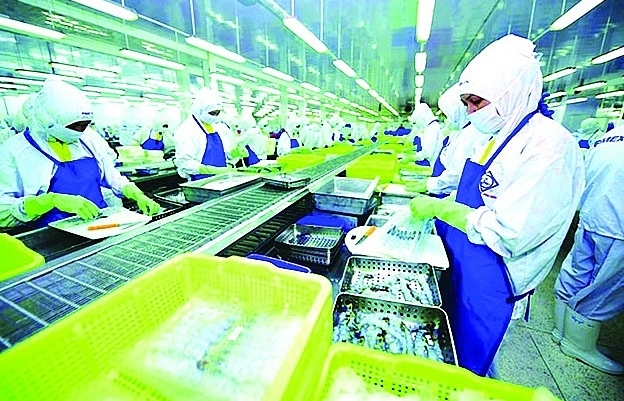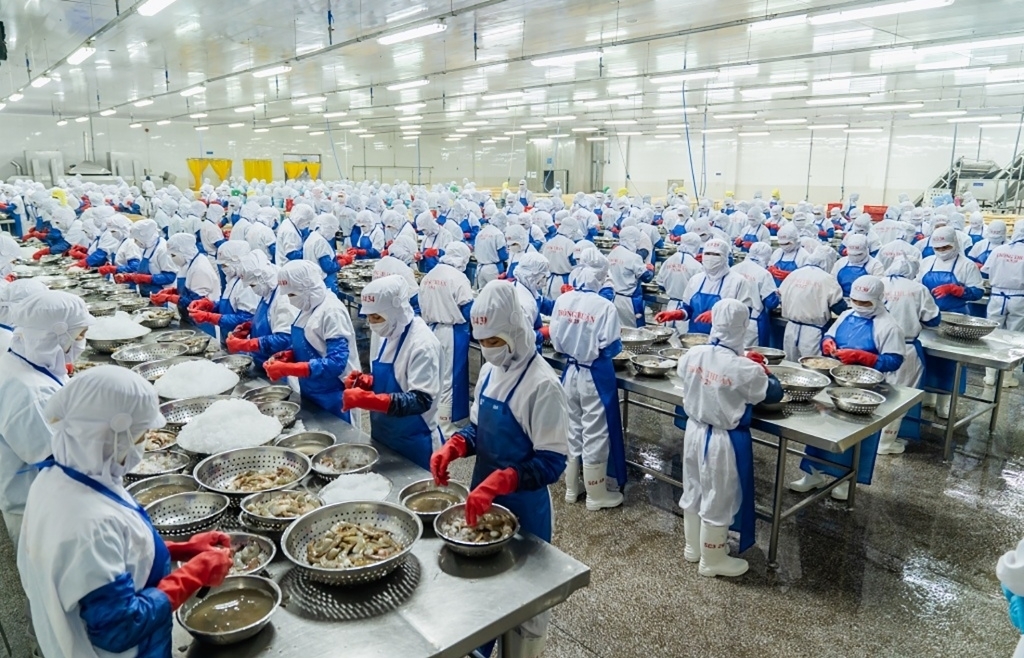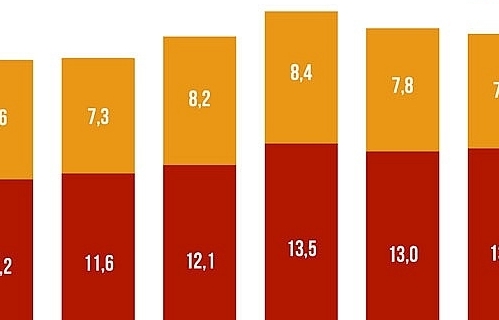Green production is the future of Vietnam's textile industry
 |
| Mr Vu Duc Giang, Chairman of Vietnam Textile and Apparel Association |
Please share the orientation of greening and sustainable development of Vietnam's textile and garment industry in the coming time. What is the current situation of enterprises in the transition to green production?
Greening and sustainable development is the inevitable trend in the market. If we do not catch up with this trend, the Free Trade Agreements that Vietnam has signed will not be effective for Vietnam's textile and garment industry in general and individual businesses; even businesses may gradually lose profits because orders are shifted into the hands of rival countries.
The orientation of greening and sustainable development has been set out in the draft Strategy for developing Vietnam's textile and garment industry by 2030, with a vision to 2035. On that basis, each enterprise will have its solution to catch up with the trend and the requirements of major markets such as Europe, the US and Japan. To achieve this goal, there is no other way but the business community, led by the role of Vietnam Textile and Apparel Association, has to develop solutions and make demands from brands, and importers, so that businesses can be proactive and adapt to the investment in facilities and infrastructure, as well as invest in people to meet that requirement. Therefore, in the coming time, each business must come up with a roadmap for each year to adapt to this trend.
In Vietnam, many businesses, such as Tan De Garment Joint Stock Company in Thai Binh province, have achieved the standards of greening and sustainable development. This enterprise is surrounded by a forest where there are factories inside. This enterprise has 19,000 employees divided into 7 areas; each area is nearly 10 hectares wide. This enterprise has invested in infrastructure that meets all standards on greening, environmental standards, using clean water sources, and renewable water sources to serve sustainable development.
However, it should be noted that not only sustainable development but also development based on transparency and parallel with ensuring the transparency of each enterprise is of urgent need. Today's brands are not only looking at green issues, saving water, or using solar and renewable energy but most importantly, all of that must be reflected in numerical value management. As a result, the IT of each unit is in charge of proving how the business operates and is controlled to achieve its goals and standards.
In addition to the strategy of greening and sustainable development, the textile and garment industry also sets a goal to gradually shift from CMT to FOB, ODM, and OBM. How will this goal be accomplished, Sir?
Vietnam Textile and Apparel Association encourages enterprises to develop from CMT to FOB, ODM, and OBM based on 3 main pillars.
First, promote investment in the short supply of the industry by being proactive in domestic raw materials and not heavily depending on overseas materials. Each country has its strengths, and so does Vietnam. The orientation from the Government in the development strategy of Vietnam's textile and garment industry to 2030, with a vision to 2035, will be the legal basis for this. In detail, Vietnam is focusing on the infrastructure of industrial parks so that the Vietnam Textile and Apparel Association and the business community call for investment in the supply shortages, especially in fabrics such as woven fabrics, high-grade fabrics and yarns.
Second, encourage businesses to train designers' resources because p ODM and OBM goods originated from the design. Third, by 2035, the Vietnamese textile and garment industry desires to achieve about 15% of exports with Vietnamese brands. This is the aspiration that the Government has assigned the Vietnamese textile and garment industry to implement in the 2035 -2045 solutions.
Third, the Vietnam Textile and Apparel Association proposes a series of mechanisms and policies for businesses, especially the issue of promoting financial resource capacity and creating a mechanism and policies on interest rates for bank loans so that businesses can actively finance FOB and ODM sales.
Vietnam's textile and garment industry targets export turnover in 2023 at 47-48 billion USD. On what basis is this number given when the market context is difficult, Sir?
The number 44 billion is a realistic target that the textile industry has achieved this year, and by 2023, we set a target of 47-48 billion USD as a basis. Firstly, according to the tax reduction roadmap of the EVFTA Agreement, in 2023, the tax rate for many items will be 0%. Second, during his recent visit to Europe, the Prime Minister is also promoting investment agreements with Europe, which are considered premises for developing industries, including the textile industry.
Third, pressure-hit enterprises in 2022 have learned lessons. Instead of specialized products as before, enterprises have produced and diversified products. Over the past time, thanks to diversification, businesses have maintained jobs for employees and have been able to maintain the growth rate, even though the growth is not as expected.
Thanks to the timely transformation from knitwear to woven goods, enterprises can also withstand the pressure of producing small orders with fast delivery time. Businesses have also diversified their markets. On the other hand, enterprises have paid more attention to traditional markets such as the markets of countries in the Russia - Soviet Union (former), African countries, and Middle East markets. Especially, China is now one of the main markets of Vietnam's textile and garment industry.
Thank you, Sir!
Related News

The wood industry seizes opportunities amid changes in the export market
11:22 | 16/12/2024 Import-Export

Necessary conditions for operating a "natural flavor" business
19:28 | 14/12/2024 Import-Export

Seafood exports increase competitiveness through quality
10:24 | 09/12/2024 Import-Export

Why are seafood exports to some Middle Eastern countries blocked?
10:32 | 10/12/2024 Import-Export
Latest News

VN faced with increasing trade defence investigations on rising protectionism
18:58 | 22/12/2024 Import-Export

Việt Nam expects to officially export passion fruit to the US next year
18:55 | 22/12/2024 Import-Export

UK’s carbon tax to affect VN exports
18:51 | 22/12/2024 Import-Export

Removing obstacles in granting certificates of exploited aquatic products
13:56 | 22/12/2024 Import-Export
More News

Promoting agricultural exports to the Japanese market
13:55 | 22/12/2024 Import-Export

Agricultural exports in 2024 to exceed 60 billion USD?
13:53 | 22/12/2024 Import-Export

Seafood exports expected to exceed $10 billion in 2025: expert
20:28 | 21/12/2024 Import-Export

Top 10 Reputable Animal Feed Companies in 2024: Efforts to survive the challenges of nature
18:30 | 21/12/2024 Import-Export

Vietnam's import-export surges 15.3%
09:44 | 20/12/2024 Import-Export

More Vietnamese firms interested in Saudi Arabia: Ambassador
09:43 | 20/12/2024 Import-Export

“Give and Take” in the Value Chain of the CPTPP Market
09:30 | 20/12/2024 Import-Export

Binh Dinh province works to attract investment from Japan
15:44 | 19/12/2024 Import-Export

Agricultural, forestry and fishery exports “reach the target” early
15:20 | 19/12/2024 Import-Export
Your care

VN faced with increasing trade defence investigations on rising protectionism
18:58 | 22/12/2024 Import-Export

Việt Nam expects to officially export passion fruit to the US next year
18:55 | 22/12/2024 Import-Export

UK’s carbon tax to affect VN exports
18:51 | 22/12/2024 Import-Export

Removing obstacles in granting certificates of exploited aquatic products
13:56 | 22/12/2024 Import-Export

Promoting agricultural exports to the Japanese market
13:55 | 22/12/2024 Import-Export





